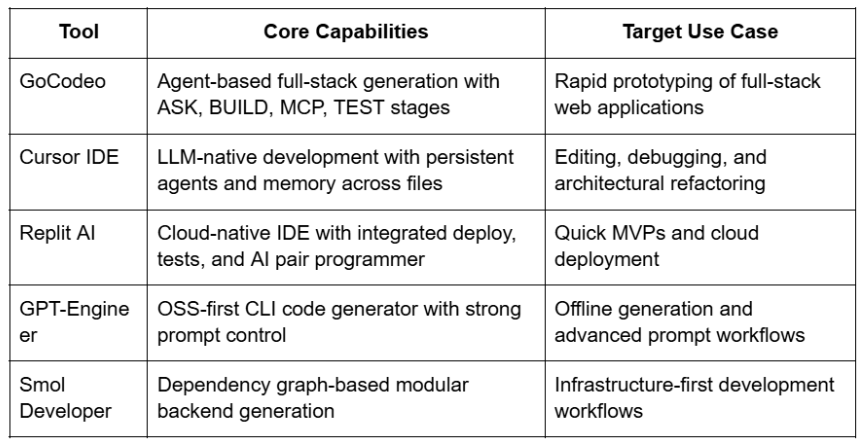
In 2025, the software engineering landscape has been significantly transformed by AI-powered code generation. What was once a time-consuming and error-prone process is now increasingly streamlined through intelligent systems that convert high-level instructions into functional and scalable codebases. This shift is not just a matter of convenience but a foundational change in how software is architected, developed, tested, and deployed. For developers, the ability to go from a product idea to working code within minutes is no longer aspirational, it is becoming an operational norm.
This blog provides a detailed technical exploration of how modern AI agents function, what architectures and tools support their capabilities, and how developers can adopt these technologies effectively. Our goal is to deeply understand the mechanism of AI-driven software development and the way it impacts developer workflows across the stack.
Prior to 2024, the primary AI support available to developers came in the form of contextual code completion tools like GitHub Copilot, TabNine, and Kite. These tools leveraged large language models to provide token-level completions that were trained on large volumes of open-source code. While helpful for improving productivity, they had limited contextual awareness beyond the current file and were prone to syntactic errors, hallucinations, or suggestions lacking architectural coherence.
By 2025, development workflows are now increasingly supported by autonomous agents that understand entire repositories, interpret architectural requirements, orchestrate file structures, and make intelligent decisions across the software stack. These agents are not confined to IDE suggestions but operate as full-fledged systems capable of:
This model is underpinned by advances in agentic AI systems which combine planning, memory, retrieval, tool execution, and feedback loops to simulate a collaborative software engineer.
Modern AI development agents begin their work with a prompt, which can range from a detailed specification to a simple feature request. These prompts are processed using advanced NLP pipelines capable of:
This step outputs a structured representation of developer intent, often translated into internal DSLs (Domain-Specific Languages) or intermediate schemas.
Once the prompt is interpreted, the system synthesizes a foundational structure for the application. This includes:
Agents typically operate using planning graphs or action graphs which help them plan generation steps with dependency awareness. This prevents broken imports, circular dependencies, and orphan components.
At this stage, the core AI code generation engine is triggered. Depending on the platform, this may involve a single monolithic LLM or a composition of specialized models.
Technically, the code generation involves:
Output includes:
Following code generation, most systems enter a validation loop. This step ensures that the output is not only syntactically correct but semantically aligned with the initial requirements.
Validation steps include:
Some agents include error-repair feedback loops where failed compilations or failing tests are automatically debugged and corrected through self-healing prompts.
After validation, AI agents move into the deployment phase which includes:
By the end of this pipeline, developers have a fully functioning, deployable application with a running front-end, backend, database, and operational pipeline.

Unlike generic LLMs, these are fine-tuned on multi-language codebases with syntax trees, compiler traces, and commit histories. They use contrastive learning and code search techniques to achieve deeper semantic alignment.
Modern agents use retrieval layers to fetch relevant examples and constraints from codebases, libraries, or doc embeddings. This avoids hallucinations and improves determinism in generated outputs.
Some tools split responsibilities across agents:
These agents work in orchestration using task queues and shared memory buffers.
Integrated deployment pipelines use APIs to push live updates, monitor app health, rollback on errors, and integrate with observability tools like Sentry or Datadog.
Developers can now build MVPs in hours rather than weeks, enabling more iterative experimentation and faster validation of ideas.
AI handles routing, auth wiring, DB setup, and UI scaffolding, allowing developers to focus on core logic and product-specific challenges.
Generated code is often aligned with style guides, architectural patterns, and security best practices out of the box.
With AI handling many cross-cutting concerns, developers spend less time switching between frontend, backend, infra, and CI workflows.
While AI significantly reduces the manual effort required to ship software, it does not absolve developers from critical engineering responsibilities:
By 2025, the IDE is transforming into a collaborative environment where developers interact with agents that:
These environments are not limited to local code editing but encompass end-to-end product development including project planning, backlog estimation, and technical documentation.
AI-powered code generation in 2025 is redefining what it means to build software. Developers are transitioning from manual authors of code to orchestrators of intelligent systems that co-create robust applications. The journey from idea to code is now measured in minutes, not months. However, the human element remains indispensable. The best outcomes arise when developers and AI collaborate intelligently, combining machine efficiency with human intuition.
As these tools continue to evolve, the role of developers will expand to encompass more strategic and system-level thinking, unlocking new levels of productivity and innovation across the software development lifecycle.